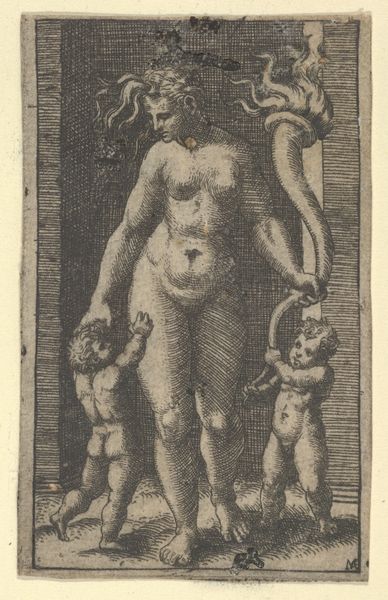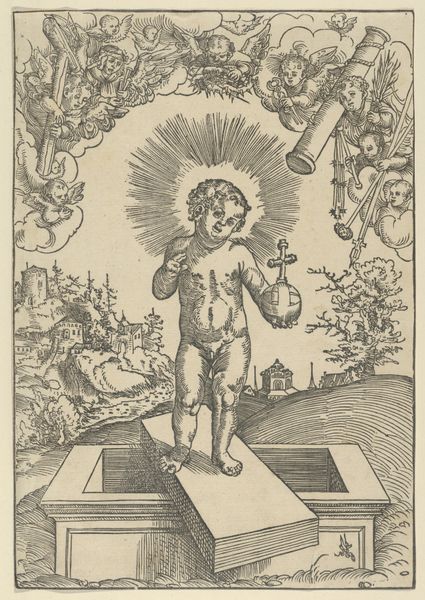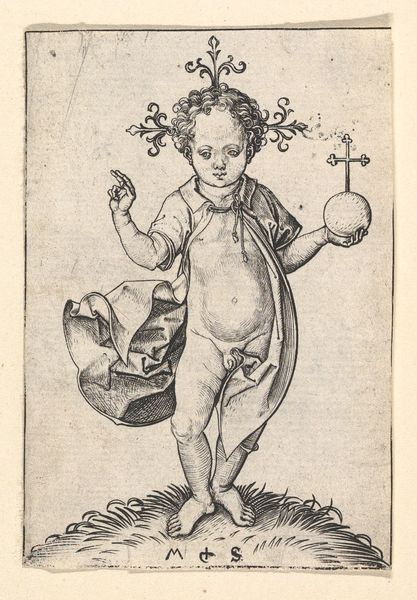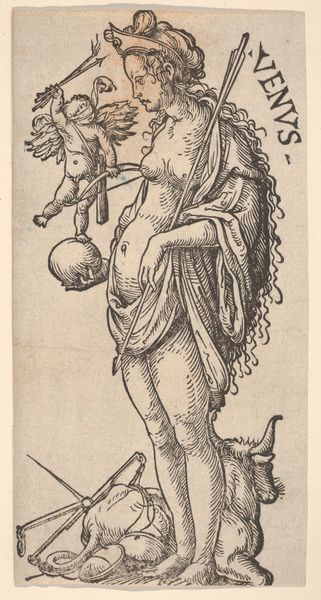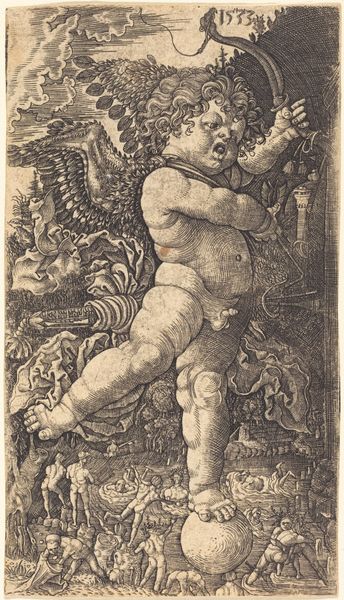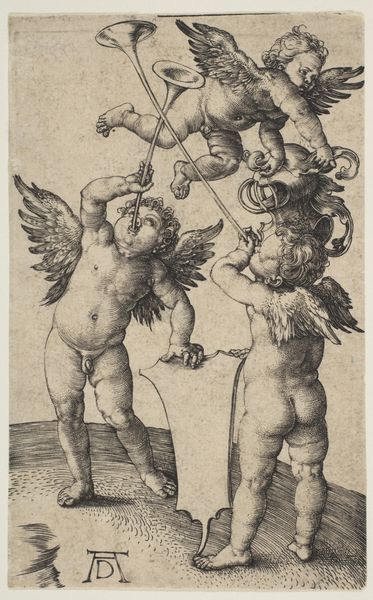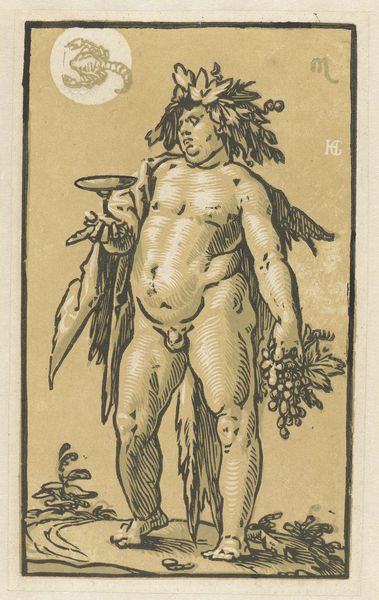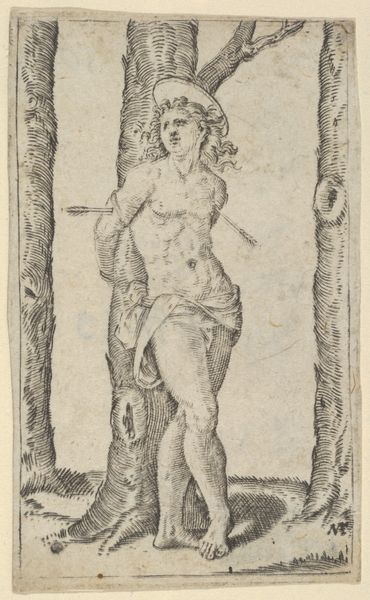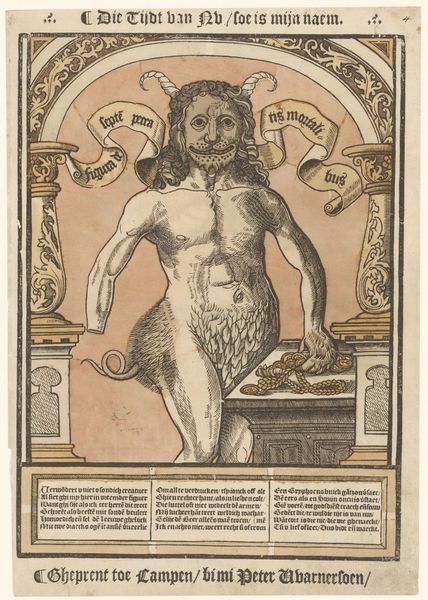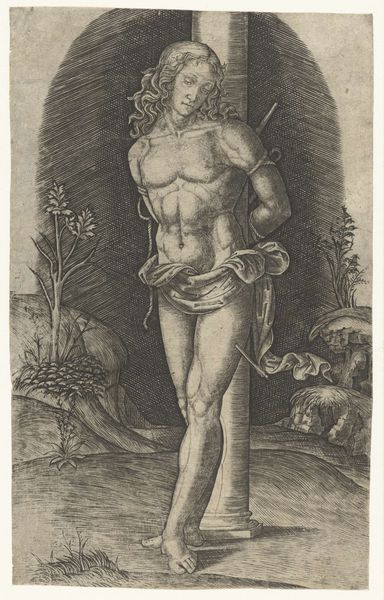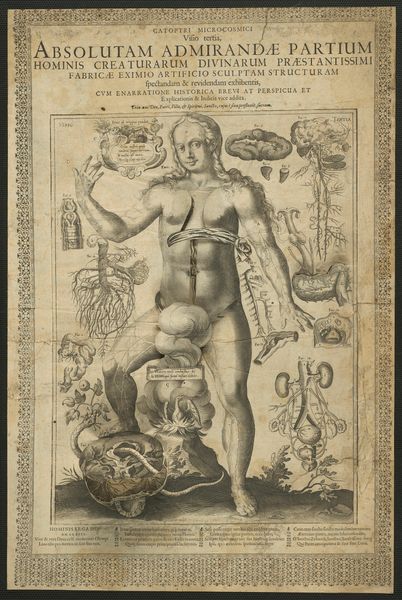
Silver Statuette of the Christ Child, from the Wittenberg Reliquaries 1472 - 1553
0:00
0:00
drawing, print, woodcut
#
drawing
# print
#
figuration
#
11_renaissance
#
coloured pencil
#
woodcut
#
history-painting
#
northern-renaissance
#
nude
Dimensions: Sheet: 5 1/8 × 2 3/16 in. (13 × 5.6 cm)
Copyright: Public Domain
Curator: This intriguing woodcut comes from Lucas Cranach the Elder's studio. Titled "Silver Statuette of the Christ Child, from the Wittenberg Reliquaries," it was produced sometime between 1472 and 1553. What are your initial impressions? Editor: Stark. The use of line is striking—almost severe. It feels quite somber given the subject. Curator: It’s fascinating how Cranach and his workshop capitalized on the printing press. Woodcuts allowed for mass production, making religious imagery more accessible. Consider the implications for labor and dissemination here. The transition from handcrafted devotional objects to easily reproduced images marks a huge change in the way religious faith was engaged with. Editor: True. And the formal structure underscores this point. The strong vertical axis and the deliberate, albeit crude, symmetry create a powerful, iconic image, one fit for repeated replication. The Christ Child stands on what appears to be foliage or perhaps a stylized beast; he raises one hand in blessing and cradles an orb in the other. Semiotically rich. Curator: The "orb" you mention probably represents the world, symbolizing Christ’s dominion. The fact this was included in a collection of reliquaries indicates its intended use – a symbolic artifact meant to invoke both devotion and, perhaps, material connection with the divine. We can easily think of how the prints and other accessible images served to reaffirm cultural norms but were used to also communicate subversive, or even heretical ideas and challenge power structures through subtle manipulations. Editor: Subversive ideas in such an aesthetically constrained form are intriguing. Considering its starkness and relative simplicity, there's a striking contrast between its artistic restraint and what you suggest may be culturally revolutionary function. And despite the rigidity in the woodcut's structure, notice the softness achieved through the rendering of the Christ Child's hair and chubby features, further highlighting the contrast between form and meaning. Curator: Indeed. So the image is doing more than simple theological advertisement. Cranach shows us how images and materials, labor, commerce, and production came together during the Renaissance to redefine faith. Editor: Ultimately, it shows that artistic conventions of this time transcend simple depictions; instead, they offer complex messages open for continuous contemplation, as well as being active material players in shaping religious movements.
Comments
No comments
Be the first to comment and join the conversation on the ultimate creative platform.

